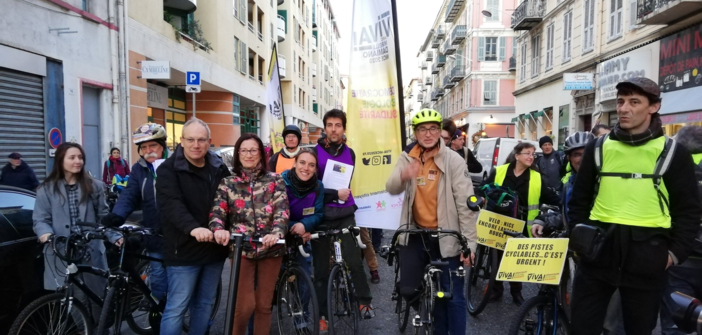The ViVA! list, led by Mireille Damiano, has presented its ambitious cycling plan* for Nice.
An “ecolutionary” ambition
Starting from the fact that Nice is ranked second to last in the national barometer of cycling-friendly cities, released by the French Federation of Bicycle Users (FUB), ViVA! announces the construction of 340km of bike lanes as the flagship measure of its program, aiming to achieve the target of 15% of journeys by bike by the end of the term. This target appears realistic compared to the situation in the Netherlands, where, despite a much less favorable climate than in Nice, cycling accounts for 28% of journeys.
A financial commitment commensurate with the stakes.
Cities like Strasbourg or Bordeaux allocate significant budgets for cycling development (70 million over 4 years, compared to the 500,000 euros annually indicated by the Nice Metropolis). In line with FUB’s recommendations, ViVA! commits to ensuring a minimum budget dedicated to cycling development of 25 euros per resident, totaling 8.6 million per year. This figure may seem considerable but should be viewed in relation to the 1.5 billion-euro budget of the Metropolis.
The first 10 commitments of VIVA for its cycling plan for Nice:
- Construct 340 km of bike lanes to significantly increase the share of cycling in transportation.
- Build a cycling network covering the entire city, allowing access to a secure bike lane serving any other part of the city within 5 minutes. This network must be continuous, maintained, protected, respected, and well-signaled.
- Integrate cycling with public transport (bike parking, racks or trailers for bicycles on buses to the hills, the ability to take bikes on trains and certain trams).
- Install secure parking options in all activity zones, including train stations, schools, universities, libraries, hospitals, public services, etc., throughout the city.
- Improve the blue bikes (classic and electric) and ensure this service is available in all districts, including underserved areas.
- Develop cargo bike deliveries by completely overhauling the logistics system: short circuits, lockers, etc.
- Create and run cycling houses in neighborhoods with participatory workshops.
- Encourage and organize cycling with an educational cycling plan for school students and support for the elderly (notably tricycles).
- Organize a cycling policy in constant consultation with users and associations.
- Moderate speed and road traffic everywhere, and generalize peaceful traffic zones.


